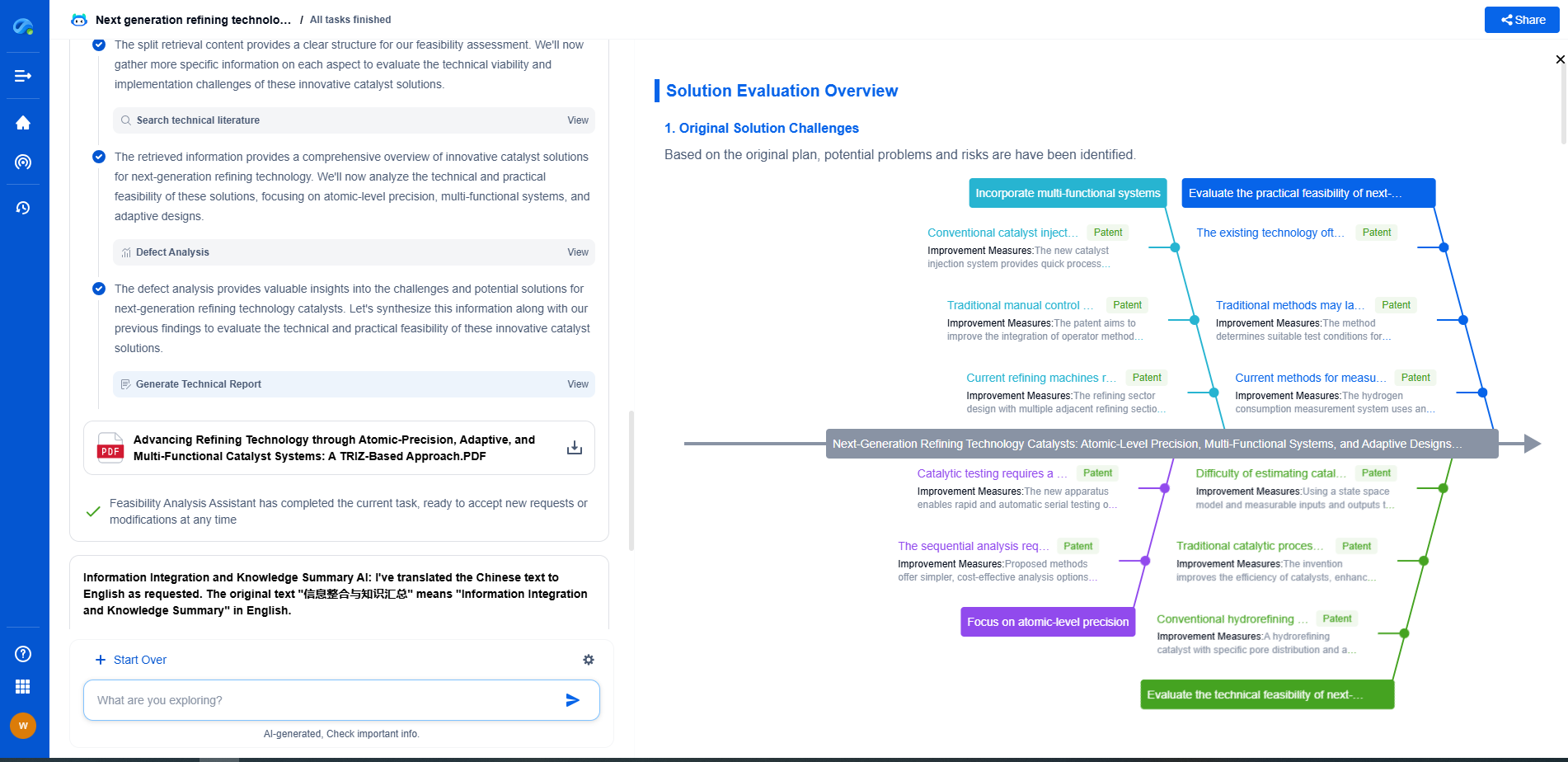Fixed robots vs Mobile robots: Which fits your application?
JUN 26, 2025 |
When deciding on the right type of robot for your application, it's crucial to understand the distinct categories: fixed robots and mobile robots. Each type has its unique capabilities and limitations, making one more suitable than the other depending on the specific needs and goals of your operation.
Fixed Robots: Consistency and Power
Fixed robots are stationary robotic systems often used in industrial settings for tasks that require high precision and repeatability. These robots are typically anchored to a single location and are designed to perform specific tasks such as welding, painting, assembly, or packaging. They are known for their strength and speed, capable of handling heavy loads and performing repetitive tasks with great accuracy.
The fixed nature of these robots means they can be seamlessly integrated into production lines to increase efficiency and throughput. Their programming can be tailored to optimize specific tasks, and their reliability makes them a staple in environments where consistent output is critical. However, their static position limits their versatility, and any change in task or location often requires significant reconfiguration or investment in additional robots.
Mobile Robots: Flexibility and Adaptability
Mobile robots, on the other hand, are designed to move around their environment. They come in various forms, from autonomous guided vehicles (AGVs) to drones and robotic vacuum cleaners. These robots are equipped with sensors and navigation systems that allow them to understand and interact with their surroundings, making them ideal for dynamic environments where tasks and locations frequently change.
The key advantage of mobile robots is their flexibility. They can be deployed in warehouses for inventory management, in hospitals for medication delivery, or even in agricultural settings for crop monitoring. Their ability to adapt to new tasks and environments makes them a versatile tool for industries looking to optimize and automate processes across different departments. However, mobile robots may not offer the same level of precision and strength as their fixed counterparts, making them less suitable for tasks that require high accuracy and heavy lifting.
Choosing the Right Robot for Your Application
When deciding between fixed and mobile robots, consider the specific requirements of your application. If your operation involves repetitive tasks that demand high precision and heavy handling, fixed robots may be the way to go. Their ability to operate within a confined space with minimal human intervention can significantly enhance productivity and reduce error rates.
Conversely, if your application requires adaptability and the ability to perform various tasks across different locations, mobile robots offer the flexibility you need. Their capacity to navigate and operate autonomously in complex environments makes them an excellent choice for applications where versatility and scalability are paramount.
Cost and Implementation Considerations
Another factor to consider is the cost and complexity of implementing these robotic systems. Fixed robots often require a higher initial investment and a more complex setup, including safety measures and integration with existing systems. However, their long-term benefits in high-volume production can justify the expenditure.
Mobile robots may offer a more cost-effective solution for businesses that prioritize flexibility and quick deployment. Their implementation might be less cumbersome, with the added advantage of being easily reprogrammed for different tasks or scaled up as needs evolve. It's essential to evaluate the total cost of ownership and potential return on investment when choosing the right robotic solution.
Conclusion: Aligning Robots with Business Goals
Ultimately, the decision between fixed and mobile robots should align with your overall business goals and operational needs. Whether you prioritize precision and reliability or flexibility and adaptability, understanding the strengths and limitations of each type of robot will help you make an informed decision that enhances your productivity and efficiency. By carefully considering your specific application, budget constraints, and long-term objectives, you can choose the robotic solution that best fits your operation and drives your business forward.
Ready to Redefine Your Robotics R&D Workflow?
Whether you're designing next-generation robotic arms, optimizing manipulator kinematics, or mining patent data for innovation insights, Patsnap Eureka, our cutting-edge AI assistant, is built for R&D and IP professionals in high-tech industries, is built to accelerate every step of your journey.
No more getting buried in thousands of documents or wasting time on repetitive technical analysis. Our AI Agent helps R&D and IP teams in high-tech enterprises save hundreds of hours, reduce risk of oversight, and move from concept to prototype faster than ever before.
👉 Experience how AI can revolutionize your robotics innovation cycle. Explore Patsnap Eureka today and see the difference.
- R&D
- Intellectual Property
- Life Sciences
- Materials
- Tech Scout
- Unparalleled Data Quality
- Higher Quality Content
- 60% Fewer Hallucinations
Browse by: Latest US Patents, China's latest patents, Technical Efficacy Thesaurus, Application Domain, Technology Topic, Popular Technical Reports.
© 2025 PatSnap. All rights reserved.Legal|Privacy policy|Modern Slavery Act Transparency Statement|Sitemap|About US| Contact US: help@patsnap.com

